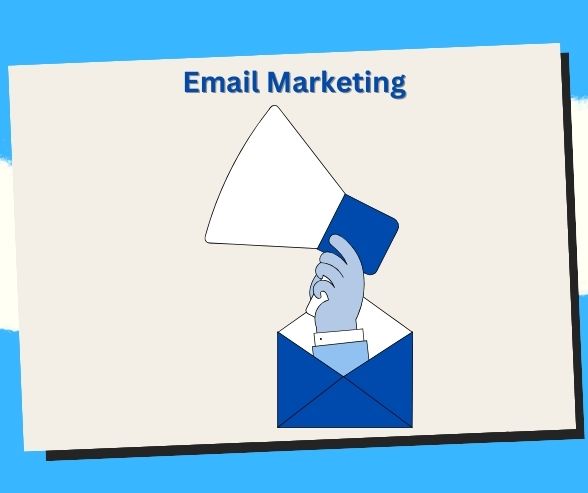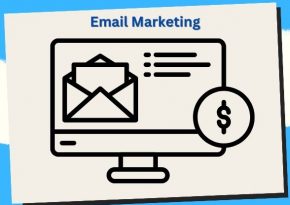
Targeted Triumph: Segmentation Strategies for Email Lists
Learn how to skyrocket your email marketing results with segmentation strategies that deliver personalized content to the right audience segments.
🎯 Unlocking Precision: Mastering Segmentation Strategies for Email Lists 📊
In the world of email marketing, one size does not fit all. Segmentation allows marketers to divide their email lists into smaller, targeted segments based on specific criteria such as demographics, behavior, or preferences. By sending personalized and relevant content to each segment, marketers can improve engagement, increase conversions, and foster stronger relationships with their subscribers. Join us as we explore segmentation strategies for email lists and how to implement them effectively.
The Segmentation Strategies for Email Lists 💪
- Segmentation involves dividing your email list into smaller groups or segments based on shared characteristics or behaviors.
- Segmented email campaigns allow marketers to deliver highly targeted and relevant content to different segments of their audience, increasing engagement and conversion rates.
- Tip: Start by identifying the key criteria for segmentation, such as demographics, purchase history, engagement level, or lifecycle stage.
Demographic Segmentation: Getting to Know Your Audience 🧑🤝🧑
- Demographic segmentation involves categorizing subscribers based on demographic factors such as age, gender, location, or income level.
- Understanding the demographics of your audience allows you to tailor your messaging, offers, and content to better resonate with each segment.
- Tip: Use sign-up forms and surveys to collect demographic information from subscribers and use it to segment your email list effectively.
Behavioral Segmentation: Understanding Actions and Interactions 🚶♂️
- Behavioral segmentation divides subscribers based on their actions, interactions, or engagement with your emails or website.
- Common behavioral segments include new subscribers, active subscribers, inactive subscribers, frequent purchasers, or cart abandoners.
- Tip: Use tracking and analytics tools to monitor subscriber behavior and identify opportunities for segmentation based on engagement patterns.
Preferences and Interests: Tailoring Content to Individual Tastes 🎨
- Preferences and interest-based segmentation involve categorizing subscribers based on their stated preferences, interests, or past interactions with your brand.
- By delivering content that aligns with subscribers’ interests, marketers can increase engagement and foster stronger connections with their audience.
- Tip: Use preference centers or subscription options to allow subscribers to self-identify their interests and preferences, enabling more accurate segmentation.
Lifecycle Stage: Nurturing Relationships from Start to Finish 🔄
- Lifecycle stage segmentation categorizes subscribers based on where they are in the customer journey, such as new leads, prospects, first-time customers, or loyal advocates.
- Tailoring your messaging and content to each stage of the customer lifecycle allows you to provide the right information at the right time, increasing conversion rates and customer retention.
- Tip: Map out the customer journey and identify key touchpoints where segmentation can enhance the user experience and drive desired outcomes.
Dynamic Segmentation: Adapting to Changing Needs 🔄
- Dynamic segmentation involves continuously updating and refining your segments based on changing subscriber behavior, preferences, or engagement levels.
- Automation tools and triggers allow marketers to dynamically segment subscribers in real-time based on actions such as email opens, clicks, or website visits.
- Tip: Set up automated workflows and triggers to dynamically segment subscribers based on their interactions with your emails and website, ensuring that your messaging remains relevant and timely.
Personalization: The Key to Effective Segmented Campaigns 🌟
- Personalization is the cornerstone of effective segmented email campaigns, allowing marketers to deliver tailored content, offers, and messaging to each segment.
- Use dynamic content blocks, merge tags, and personalized recommendations to customize email content based on each segment’s characteristics and preferences.
- Tip: Conduct A/B testing to determine which types of personalization resonate best with each segment and drive higher engagement and conversion rates.
Testing and Optimization: Refining Your Segmentation Strategy 📈
- Testing and optimization are essential for refining your segmentation strategy and maximizing the effectiveness of your email campaigns.
- Experiment with different segmentation criteria, messaging approaches, and content strategies to identify what resonates best with each segment.
- Tip: Monitor key metrics such as open rates, click-through rates, conversion rates, and unsubscribe rates to gauge the success of your segmented campaigns and make data-driven adjustments accordingly.
Segmentation is a powerful strategy for maximizing the effectiveness of your email marketing efforts by delivering personalized and relevant content to different segments of your audience. By understanding your audience, identifying key segmentation criteria, and implementing personalized campaigns, you can increase engagement, drive conversions, and foster stronger relationships with your subscribers. Embrace segmentation as a tool for unlocking the full potential of your email marketing strategy and connecting with your audience on a deeper level. 💌✨
Benefits of Segmentation Strategies 🌟
- Improved Relevance: Segmented emails deliver content that is more relevant and tailored to the specific interests of each audience segment.
- Higher Open Rates: Personalized emails resulting from segmentation efforts tend to have higher open rates as they resonate better with recipients.
- Increased Click-Through Rates: Segmented emails drive higher click-through rates by presenting recipients with content that aligns closely with their needs and preferences.
- Enhanced Conversion Rates: Targeted content increases the likelihood of recipients taking desired actions, leading to higher conversion rates.
- Reduced Unsubscribe Rates: Segmentation ensures that subscribers receive content that is aligned with their interests, reducing the likelihood of unsubscribes.
- Better Customer Relationships: Personalized communication fosters stronger connections with subscribers by demonstrating an understanding of their individual needs.
- Optimized Email Deliverability: Segmentation helps improve email deliverability by ensuring that messages are sent to engaged and interested recipients.
- Increased Customer Lifetime Value: By delivering relevant content and nurturing relationships, segmentation can lead to higher customer lifetime value.
- Data-Driven Insights: Segmentation provides valuable insights into subscriber behavior and preferences, informing future marketing strategies.
- Competitive Advantage: Leveraging segmentation strategies allows you to stay ahead of competitors by delivering more targeted and effective email campaigns.
Case Studies 📊
- Airbnb: Segmenting their email list based on travel preferences led to a 20% increase in booking conversions.
- Amazon: Segmenting customers by purchase history resulted in a 25% increase in repeat purchases.
- Spotify: Segmenting users by music genre preferences led to a 30% increase in engagement with personalized playlists.
- HubSpot: Segmenting email subscribers by industry saw a 35% increase in click-through rates on industry-specific content.
- Nike: Segmenting their email list by geographic location led to a 20% increase in store visits through targeted promotions.
- Dropbox: Segmenting users based on their usage habits resulted in a 25% increase in product upgrades.
- Grammarly: Segmenting their email list by writing proficiency level led to a 15% increase in premium subscriptions.
- Birchbox: Segmenting subscribers by beauty preferences saw a 20% increase in product purchases through personalized recommendations.
- Netflix: Segmenting users by viewing history led to a 30% increase in engagement with personalized content recommendations.
- LinkedIn: Segmenting email recipients by industry and job title resulted in a 25% increase in click-through rates on relevant content.
Key Takeaways 🚀
- Define Your Segmentation Criteria: Determine the criteria you will use to segment your email list, such as demographics, behavior, or preferences.
- Start with Basic Segmentation: Begin by segmenting your email list into broad categories and gradually refine your segments based on performance data.
- Use Data Wisely: Gather and analyze data to inform your segmentation strategies and ensure they are based on actionable insights.
- Personalize Content: Tailor your email content to each segment’s specific needs, interests, and preferences to maximize relevance and engagement.
- Test and Iterate: Continuously test different segmentation strategies and analyze results to refine and optimize your approach over time.
- Avoid Over-Segmentation: While segmentation is essential, avoid creating too many small segments that may dilute the impact of your email campaigns.
- Maintain List Hygiene: Regularly clean and update your email list to ensure accuracy and relevance, improving the effectiveness of your segmentation efforts.
- Monitor Performance Metrics: Keep track of key performance indicators such as open rates, click-through rates, and conversion rates to assess the effectiveness of your segmentation strategies.
- Integrate Segmentation Across Channels: Extend your segmentation strategies beyond email marketing to other channels such as social media and website personalization for a cohesive customer experience.
- Stay Customer-Centric: Always prioritize the needs and preferences of your audience when designing and implementing segmentation strategies.
Frequently Asked Questions (FAQs) 🤔
- What is the best way to segment my email list?
- The best segmentation approach depends on your specific business goals and target audience. Common segmentation criteria include demographics, purchase history, and engagement level.
- How often should I update my segmentation criteria?
- It’s essential to regularly review and update your segmentation criteria based on changes in customer behavior, preferences, and market trends.
- Can I segment my email list based on engagement level?
- Yes, segmenting your email list based on engagement level allows you to tailor content and messaging to different levels of interest and activity.
- What tools can I use for email list segmentation?
- Many email marketing platforms offer built-in segmentation tools, or you can use customer relationship management (CRM) software to segment your email list based on customer data.
- Should I segment my email list based on past purchases?
- Segmenting your email list based on past purchases allows you to deliver targeted product recommendations and promotions to customers based on their buying history.
- How can I measure the effectiveness of my segmentation strategies?
- You can measure the effectiveness of your segmentation strategies by tracking key metrics such as open rates, click-through rates, conversion rates, and revenue generated from segmented campaigns.
- Is it possible to segment my email list based on geographic location?
- Yes, segmenting your email list based on geographic location allows you to deliver localized content, promotions, and events to subscribers in specific regions.
- What are some common segmentation mistakes to avoid?
- Common segmentation mistakes include over-segmentation, neglecting to update segmentation criteria regularly, and failing to personalize content effectively.
- Can I segment my email list based on website behavior?
- Yes, you can segment your email list based on website behavior such as pages visited, products viewed, and actions taken on your website.
- How can I ensure that my segmentation efforts are GDPR compliant?
- Ensure that you obtain consent from subscribers before collecting and using their personal data for segmentation purposes, and provide options for subscribers to update their preferences or unsubscribe at any time.
Conclusion
Effective email list segmentation is the cornerstone of personalized and targeted email marketing campaigns.
By dividing your audience into smaller, tailored segments based on specific criteria, you can deliver content that resonates with recipients and drives higher engagement, conversion, and ultimately, business success. Embrace the segmentation strategies outlined in this guide, and unlock the power of personalized communication to connect with your audience on a deeper level. 🚀
Key Phrases
- Segmentation strategies
- Email list management
- Targeted marketing
- Personalization tactics
- Audience segmentation
- Email campaign optimization
- Dynamic content delivery
- Precision targeting
- Subscriber engagement
- Conversion optimization
Best Hashtags
- #SegmentationStrategies
- #EmailMarketing
- #Personalization
- #TargetedMarketing
- #AudienceSegmentation
- #EmailCampaigns
- #DynamicContent
- #PrecisionTargeting
- #SubscriberEngagement
- #ConversionOptimization
Save/Share this post with QR CODE
Disclaimer
This article is for informational purposes only and does not constitute endorsement of any specific technologies or methodologies and financial advice or endorsement of any specific products or services.
📩 Need to get in touch?
Feel free to Email Marketing Smartly for comments, suggestions, reviews, or anything else.
We appreciate your reading. 😊Simple Ways To Say Thanks & Support Us:
1.) ❤️GIVE A TIP. Send a small donation thru Paypal😊❤️
Your DONATION will be used to fund and maintain MKTGS.com
Subscribers in the Philippines can make donations to mobile number 0917 906 3081, thru GCash.
3.) 🛒 BUY or SIGN UP to our AFFILIATE PARTNERS.
4.) 👍 Give this news article a THUMBS UP, and Leave a Comment (at Least Five Words).
AFFILIATE PARTNERS

World Class Nutritional Supplements - Buy Highest Quality Products, Purest Most Healthy Ingredients, Direct to your Door! Up to 90% OFF.
Join LiveGood Today - A company created to satisfy the world's most demanding leaders and entrepreneurs, with the best compensation plan today.









Comments (0)